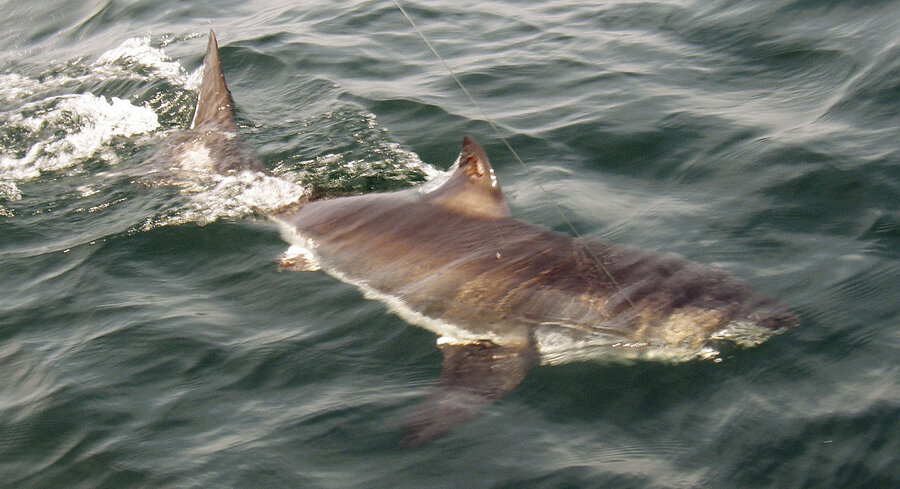Mama shark leads researchers to first-ever discovery of great white nursery
Loading...
For the first time, Ocearch, a group that tags, tracks, and monitors great white sharks, has discovered a nursery of baby great whites off the coast of New York.
“We have just been totally overwhelmed by the abundance here and the volume of sharks we’re seeing,” Chris Fischer, founder of Ocearch, told ABC7 in New York.
And for researchers, understanding the dynamics and location of great white nurseries was the end goal all along.
“Back in 2012, 2013, the real question was where are these sharks in the North Atlantic giving birth? Because that’s where they’re most vulnerable,” Mr. Fischer told CBS News.
“The strategy at the time was, get a tag out on big mature animals, and when you get one on a big female, 18 months later, she should lead you to the holy grail of the research, the birthing site.”
And it worked.
Mary Lee, a 16-feet long, 3,456-pound female tagged by Ocearch in 2012, returned to New York waters in May, suggesting to researchers that this area may be a favored birthing location.
“This is a really unique population of animals,” said Haley Newton, a veterinary pathologist with the Wildlife Conservation Society who has been involved with the research. “It’s a life stage that really hasn’t been studied very much.”
Ocearch tracks sharks by putting GPS tags on their dorsal fins, so each time a shark’s dorsal fin comes above the water, the location is pinned to the Ocearch database. The group’s researchers say attaching the tags is painless for the sharks and only lasts 15 minutes from start to finish. And tagging a few individuals helps researchers protect the entire shark population, adds Fischer.
Over the course of five days, Ocearch installed GPS transmitters on nine pups. Of those, five are currently living along the Long Island coast, including a 42-pound male named Hampton and a 50-pound female named Montauk. Ocearch expects the pups to stay in the general location until they reach adulthood at age 20.
New York waters are home to other shark pups, too.
In January, researchers discovered a sand shark nursery near the shore of Long Island’s Great South Bay.
Like Fischer, the New York Aquarium's vice president and director, Jon Dohlin, was delighted to find a younger population.
“One of the reasons we are excited about this information is because there are a lot of unanswered questions,” said Mr. Dohlin told LiveScience in January.








